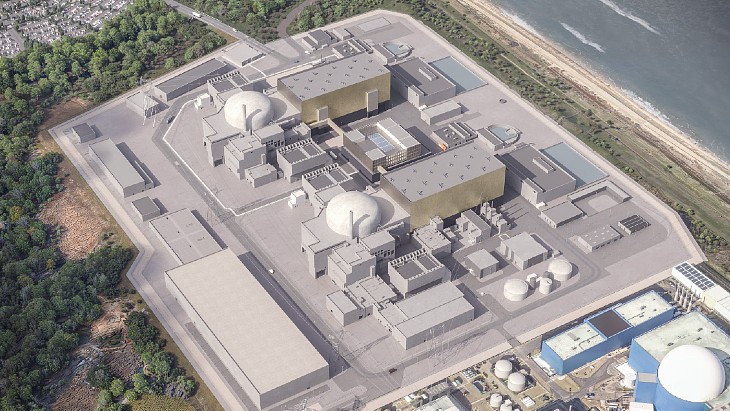The decision will enable South Africa to take its "rightful place" as a major fuel cycle player and will bring commercial opportunities as well as support production of domestic electricity and the country's role as a major supplier of medical radioisotopes, Minister of Energy and Electricity Kgosientsho Ramokgopa said
"So, what does this decision really mean? It's going to enable the PBMR (Pebble Bed Modular Reactor), that we can reopen the fuel development laboratories to undertake the research and development," the minister told a press briefing. "So, we have placed them on ice. Now we're reopening these development laboratories and making sure that scientists get to participate in this space."
Referring to the pledge made by more than 30 countries to back the goal of at least tripling global nuclear capacity by 2050, Ramokgopa said high-temperature reactors will play a "large part" in this. South Africa intends to place itself as a key player in the small modular reactor (SMR) space, in the fuel cycle as well as reactor technology, he said.
The PBMR was to have been a small-scale high-temperature reactor using graphite-coated spherical uranium oxycarbide tristructural isotropic (TRISO) fuel, with helium as the coolant, able to supply process heat as well as generating electricity. Based on well-proven German technology, South Africa had been working on the PBMR project since 1993, and PBMR Ltd was established in 1999 with the intention of developing and marketing the reactor. However, in 2010 the government formally announced its decision no longer to invest in the project, which was then placed under care and maintenance. PBMR Ltd was reincorporated into South African utility Eskom, its sole shareholder, in 2012. In 2020, the company said it was seeking to take PBMR out of care and maintenance and commercialise the business, and issued a request for expressions of interest from would-be investors.
South Africa now needs to make up for about 16 years of "lost time" for development while the PBMR has been under care-and-maintenance but has "every ambition of catching up", Ramokgopa said.
The announcement comes weeks after the South African government approved a draft Integrated Resource Plan which includes 5,200 MW of new nuclear capacity and the rebuilding of the country's nuclear supply chain.
"So the point I'm making is that South Africa is now announcing its ambition that first we're going to build our own domestic generation ... and then we want to play it globally and that's why we lifted the care and maintenance on the PBMR," he said.
Turning to waste management, Ramokgopa noted that South Africa has set up the National Radioactive Waste Disposal Institute (NRWDI) as the agency which is now responsible for managing the country's storage for low and intermediate level radioactive waste at the Vaalputs facility. With the Koeberg nuclear power plant now cleared to operate until 2045, the institute will also be focusing on dealing with used fuel from the two-unit nuclear power plant, he said. The government will be investing up to ZAR2.1 billion (USD123 million) to establish a central interim storage facility for used fuel, "and then over the long term we want to have what we call the deep geological repository".
South Africa is looking to participate in the entire nuclear fuel cycle and is "looking at partnering with some of our neighbouring countries for the enrichment of uranium as a fuel", he added.
New chapter
The South African Nuclear Energy Corporation (Necsa) said lifting the PBMR out of care-and-maintenance and transferring it to Necsa marked a "significant step" towards reactivating one of South Africa's most strategic scientific and industrial assets.
"The transfer of PBMR to Necsa and taking it out of care and maintenance aligns with South Africa's broader nuclear strategy for energy security and sovereignty, achievement of net zero objectives, and expanding the use of nuclear technology for impactful reasons beyond power," Necsa Group CEO Loyiso Tyabashe said. "Necsa is ready to utilise the technology to produce nuclear fuel and engage strategic partners for the development of the technology and intellectual property," he added.
The recent "global surge" in interest in nuclear power, especially specially small modular reactors for various applications, "augurs well" well for the revival of the PBMR technology, Necsa said.
"The Cabinet's approval marks a new chapter in South Africa's nuclear innovation journey. Necsa embraces the new era of reactivating the entire nuclear fuel cycle and is committed to ensuring that the PBMR project not only advances national energy and industrial goals but also strengthens regional and global cooperation in the development of next-generation nuclear technologies," it added.

_28367.jpg)



_55530.jpg)
_42372.jpg)
_37521_70699.jpg)

_76087_55556.jpg)




